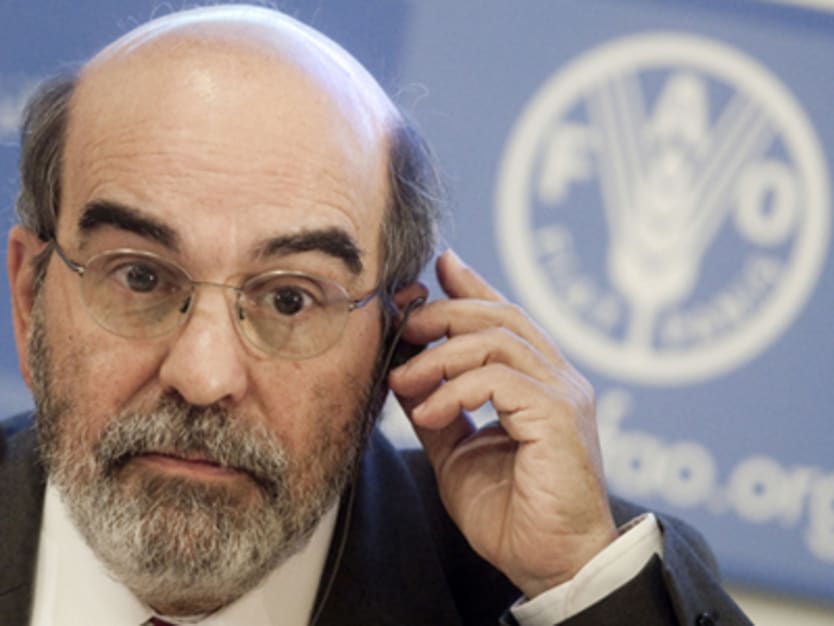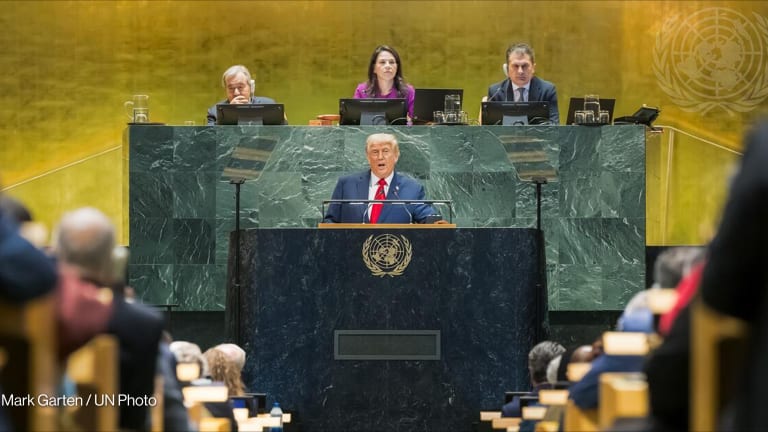
A year and a half after José Graziano da Silva’s appointment as director-general, the Food and Agriculture Organization seems ready to implement its budget revolution.
FAO member states approved two weeks ago the 2014–2015 program of work and budget, the outcome of a lengthy reform process initiated in 2009, accelerated in recent years and then revised according to a new strategic planning vision from Graziano da Silva.
At the biannual conference in Rome, member states found consensus on a 2.2 percent budget increase, but conditioned to increased efficiency gains and savings.
How will FAO adjust its plan to achieve the targets? What cuts will it make? And how will it improve levels of efficiency?
More money, but more efficiency
FAO’s 2014-2015 budget will be just over $1.028 billion, equivalent to $1.006 billion in nominal terms. The figure is approximately $22.6 million lower than Graziano da Silva’s proposal to the member states. The U.N. agency will therefore have to find those additional resources through further efficiency gains and savings, in addition to the $14 million in savings included in the original plan.
Savings and efficiency gains will impact mainly on support activities, such as information technologies, governance and administration. According to a FAO resource management official, speaking under condition of anonymity, outsourcing could be one strategy to improve efficiency.
“Not in the programs, but for example in planning, security, IT, procurement or transaction management. We’ve been doing that … [but] we are not using [it] very much,” the official told Devex about the new budget model.
A second option is to enhance collaboration on procurement with the two other Rome-based U.N. agencies (WFP and IFAD), for example on security provisions. And a third possibility is offshoring, or the relocation of services away from headquarters, as FAO has already done in Budapest with the Shared Services Office.
Cuts could also impact staffing levels, mainly in administration, although to a limited extent and not affecting technical capacity or staff in decentralized locations according to the FAO official: “Because efficiency means making your bureaucracy more efficient.”
A ‘paradigm shift’
According to the official, for many years FAO has allocated resources to sectors such as agriculture, fisheries and forestry, which were then managed by the departments. But from 2014, that will no longer be the case: Funds will instead be assigned according to objectives, managed by objective coordinators.
This represents a “paradigm shift,” the official told Devex.
Even if the directors of departments have funds to run their offices, the official explained, the objective coordinators are now the ones with the real “purchasing power” to secure services, expertise and human resources from among FAO departments through negotiation. This creates an “internal marketplace” with teams for the implementation of the goals.
The teams will also include members drawn from the regional offices, according to the same source: “The regional representatives know the work on the ground, the priorities of regions and countries. The money is in the hands of the strategic objectives coordinator, but the implementation is done by the regional representatives … for example, with local procurement.”
The new system should lead to stronger collaboration and greater efficiency, but the danger is to spend too much time in negotiations. “This requires a cultural mindset change … We’ve learned from other multilateral organizations, in particular the World Bank … It’s about leadership. We have a new director general, he changed the senior management to people that are happy to follow his leadership and this cross-cutting way of working,” noted the official.
Avoiding resource dispersion
Efficiency also means avoiding resource dispersion, or spreading resources too thinly.
FAO income comes from assessed contributions, accounting for about 41 percent of the budget, with extra-budgetary resources, mainly voluntary contributions, representing the remaining 59 percent.
As explained in the agency’s new work program, the revised FAO resource mobilization policy aims to align the voluntary contributions, managed through trust funds, with the assessed contributions.
“In the past, we had an increase of voluntary contributions, which have been used for areas of donors’ interests … [but] those are not always the priorities that members have for FAO,” the official said.
Financial health, liquidity and deficit
FAO does not immediately use all the member state contributions, having to put some resources aside for pensions.
“We don’t just put them under the pillow,” the official explained. Instead, the agency invests in financial instruments such as U.S. treasury bonds. The aim is not to make money, since the returns are very low, but rather to preserve the capital.
However, FAO remains vulnerable on the timing of payments, as was noted in the director general’s work program. Alongside delayed payments of the assessed contributions, unplanned expenditures and the uncertainty over the amount and timing of voluntary contributions — estimated on past levels and informal consultations with the donors — also undoubtedly impact FAO’s cash-flow.
In the case of a shortfall, the agency can use two safety nets: the Working Capital Fund and the Special Reserves Fund. The director general called for the replenishment of the WCF, since the level of the reserves are “insufficient to cover even one month of current cash outflow (approximately $50 million),” wrote Graziano da Silva.
Member states have not yet decided on the replenishment of either safety net, according to the official, but they did agree that in case of liquidity problems FAO may access financial markets to borrow the money it needs.
“Borrowing is not a big issue … Of course, it is not very nice to have an organization dedicated to such a noble goal … and members that are not paying, but in practice the cost of borrowing is very little … What we’ve noticed in the last few years [with regard to the delaying of payments] is that the situation has improved dramatically,” the official said.
Join the Devex community and access more in-depth analysis, breaking news and business advice — and a host of other services — on international development, humanitarian aid and global health.








